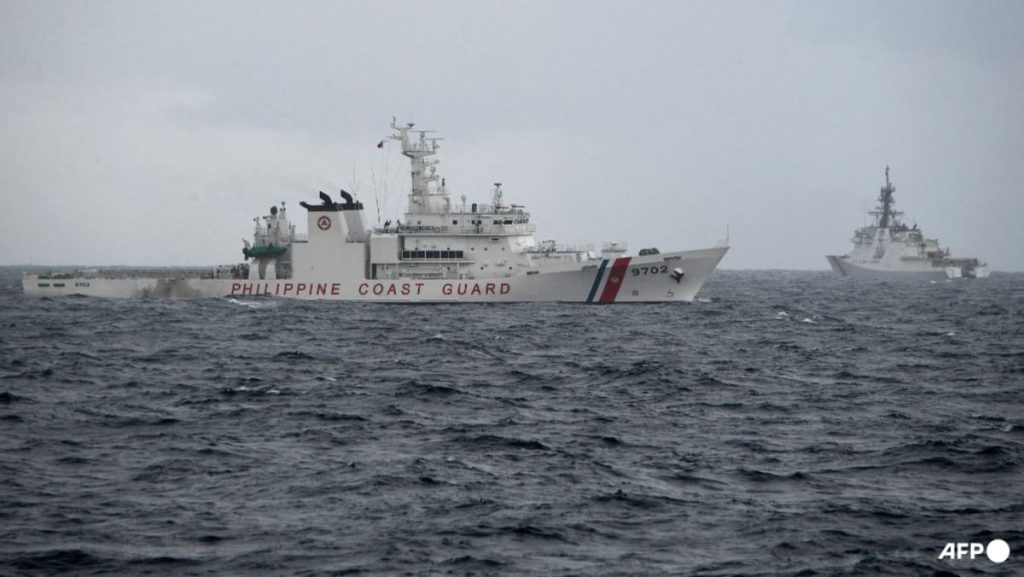The Philippines and the United States recently concluded their fifth joint maritime exercise in the South China Sea, a move underscoring the strengthening alliance between the two nations and likely to draw criticism from China. This latest exercise, the first of 2024, follows a series of similar activities initiated in 2023, signifying a marked increase in security cooperation under the presidency of Ferdinand Marcos Jr. His administration has adopted a closer alignment with Washington, facilitating the expansion of US military access to Philippine bases, strategically positioning some of these facilities facing Taiwan. The joint exercises are framed as reinforcing bilateral maritime cooperation and interoperability, enhancing the combined capabilities of both nations in the region.
This specific exercise involved significant assets from both sides. The US deployed the Carl Vinson Carrier Strike Group, a powerful naval force comprising an aircraft carrier and its accompanying escort ships, along with two guided-missile destroyers, two helicopters, and two F-18 Hornet fighter jets. The Philippines contributed the Antonio Luna frigate, the Andres Bonifacio patrol ship, two FA-50 fighter jets, and search and rescue aircraft. This combined force conducted a range of activities designed to enhance interoperability and demonstrate their shared commitment to maritime security in the contested waters of the South China Sea. The presence of the Carl Vinson Carrier Strike Group, in particular, underscores the US commitment to projecting power in the region.
The timing of the exercise is significant, coinciding with increased tensions between the Philippines and China in the South China Sea. Manila has recently raised concerns over the persistent presence of Chinese coast guard vessels within its maritime zone, including a particularly large vessel nicknamed “the monster” by Filipino officials due to its imposing size. This escalating maritime dispute forms the backdrop for the joint exercises, which can be seen as a demonstration of support for the Philippines from the US in the face of Chinese assertiveness. While the Chinese embassy in Manila has not immediately responded to requests for comment, the exercises are likely to be viewed by Beijing as a provocative move, further complicating the already tense geopolitical landscape in the region.
The strengthening of the US-Philippines alliance under President Marcos Jr. represents a significant shift in the Philippines’ foreign policy. Previous administrations had attempted to balance relations between the US and China, but Marcos Jr. has clearly prioritized the relationship with Washington, granting greater access to military bases and participating in more frequent joint exercises. This shift is driven by a combination of factors, including concerns over China’s growing assertiveness in the South China Sea, a desire to modernize the Philippine military with US assistance, and a renewed emphasis on the long-standing treaty alliance between the two nations.
The implications of these developments extend beyond the immediate region. The South China Sea is a critical waterway for global trade and navigation, and the increasing militarization of the area raises concerns about the potential for conflict. The US presence in the region is seen by some as a necessary counterbalance to China’s growing influence, while others view it as exacerbating tensions. The ongoing dispute over territorial claims and maritime rights in the South China Sea remains a complex and sensitive issue, with no easy solutions in sight. The joint exercises between the Philippines and the US add another layer of complexity to this already volatile situation.
The future of the South China Sea remains uncertain, but the recent joint maritime exercises underscore the growing importance of the US-Philippines alliance in the region’s geopolitical dynamics. As tensions continue to simmer between the Philippines and China, and as the US seeks to maintain its presence in the region, the frequency and scale of these exercises are likely to increase. These developments will be closely watched by regional powers and the international community, as they have significant implications for the stability and security of the South China Sea and the broader Indo-Pacific region.

